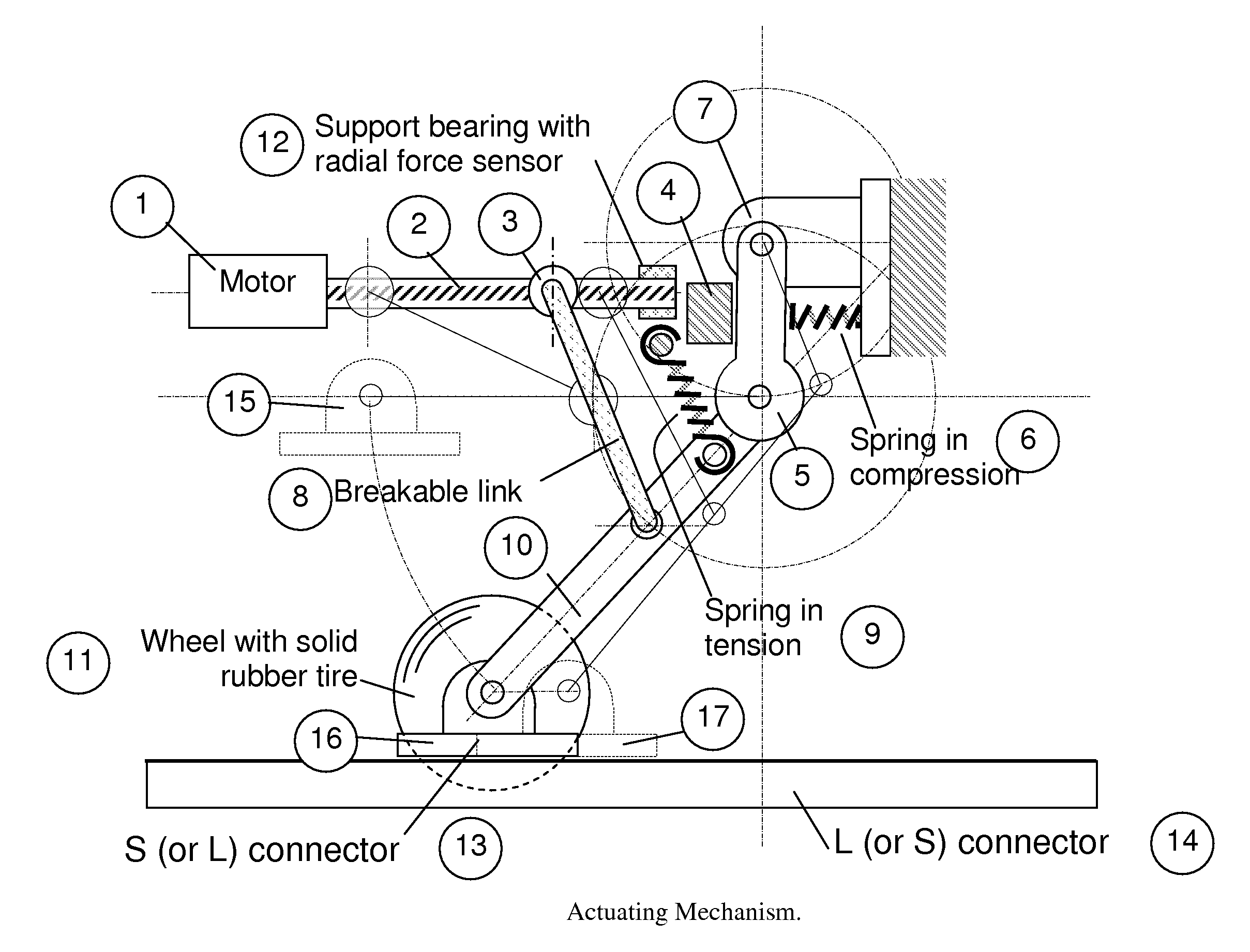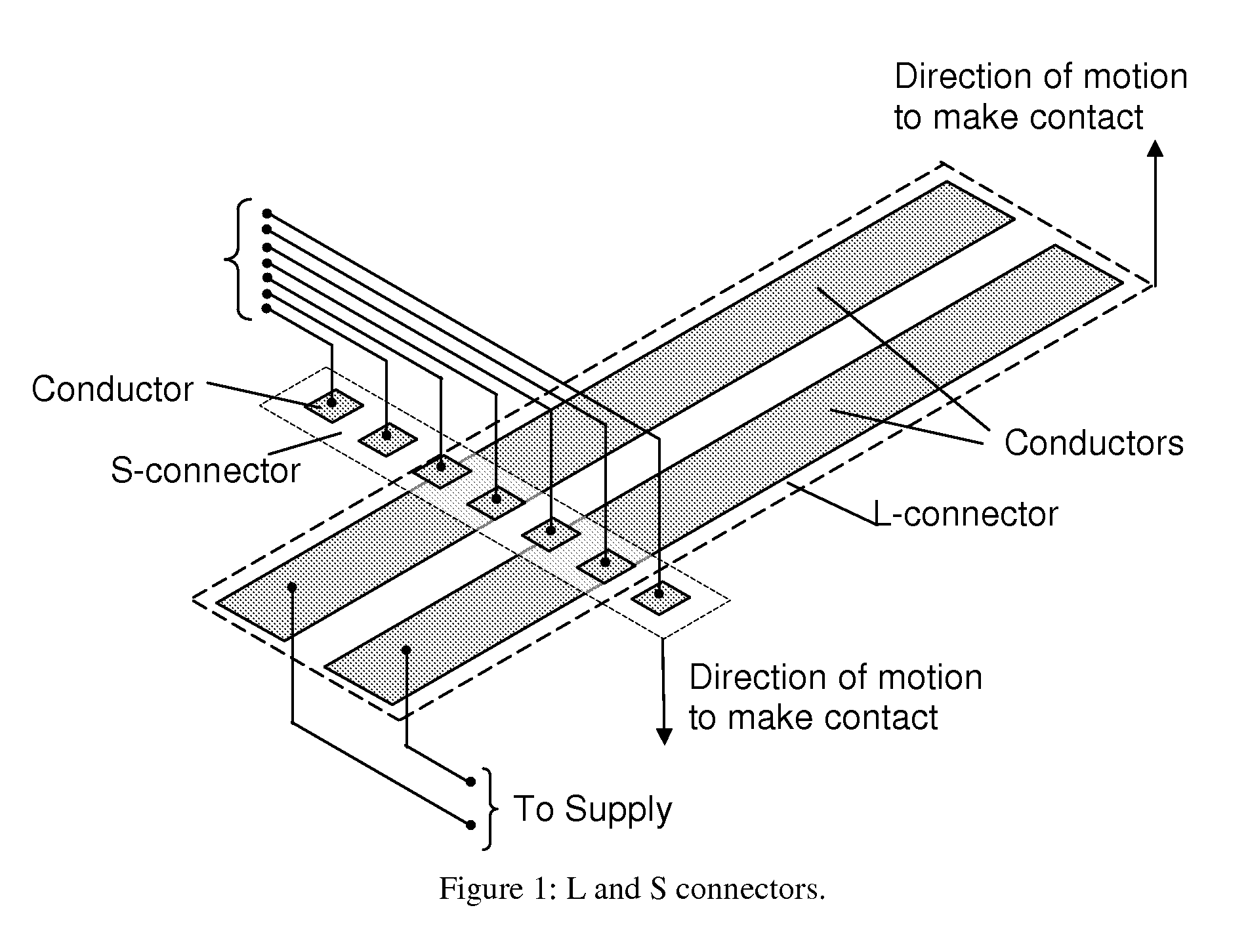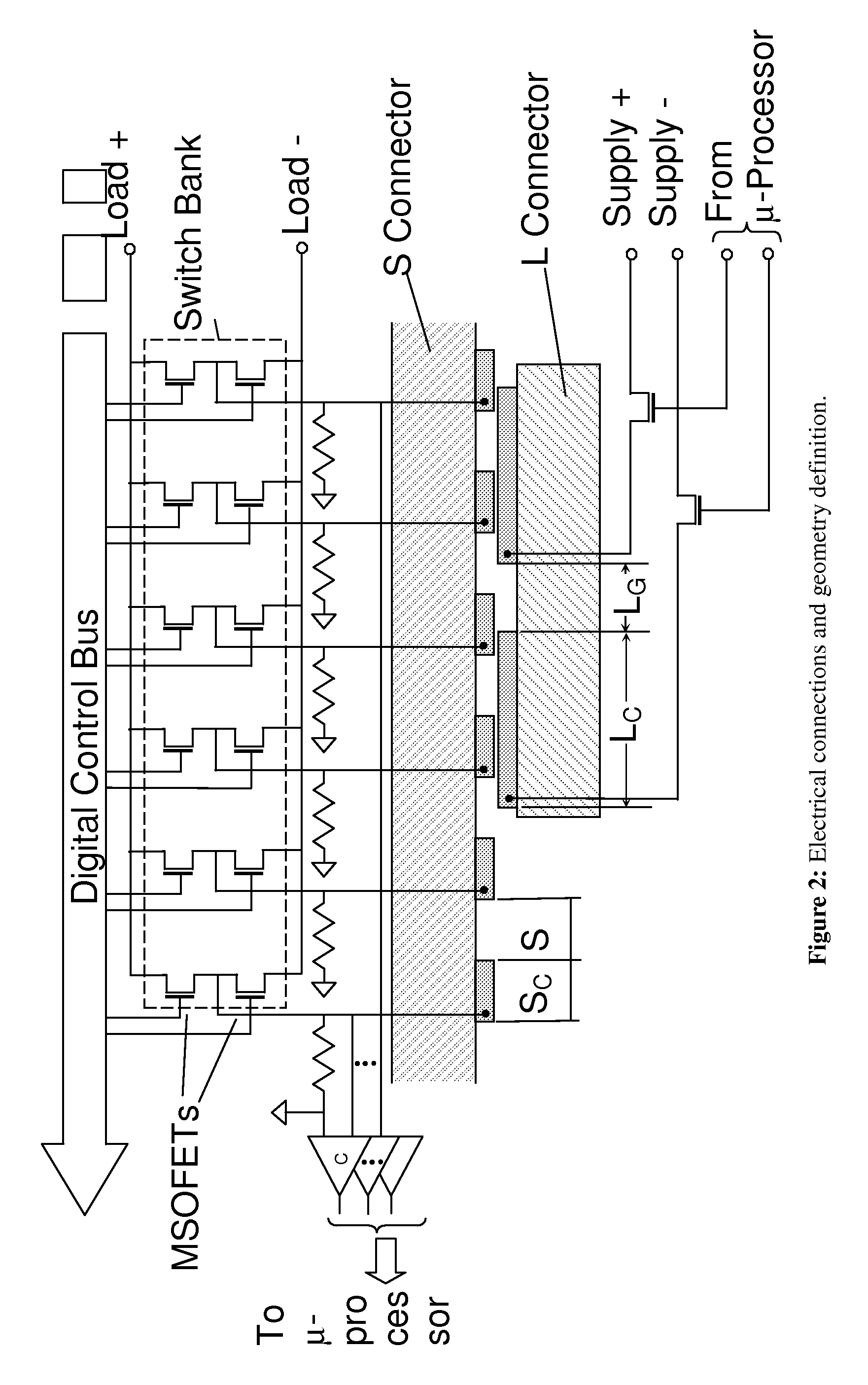Widely deployable charging system for vehicles
a charging system and vehicle technology, applied in charging stations, transportation and packaging, coupling device connections, etc., can solve the problems of unsuitable modern personal use vehicles, complex infrastructure modifications, and bulky intrusion of configurations,
- Summary
- Abstract
- Description
- Claims
- Application Information
AI Technical Summary
Problems solved by technology
Method used
Image
Examples
Embodiment Construction
[0033]A mechanical, electrical and telecommunication arrangement to transfer electrical energy to a vehicle is described in this invention. At the core of the system (see FIG. 1) is a pair of linear arrays of conductive elements insulated from each other. A specific rendition where one of the arrays is a 1×7 array (labeled as S-Connector) and the other is a 2×1 labeled L connector is shown in the FIG. 1. One of the connectors (either S or L connector) is placed on the infrastructure side and the other on a vehicle. When the array on the vehicle is in the proximity of the array on the ground, such that the two have an overlap, one or both of the arrays are moved towards each other. This causes the array elements—labeled as “conductors”, to mate and form an electrical contact in the overlap region. Depending on the relative position of the vehicle in the parking stall, an arbitrary group of conductors from S connector may come in contact with an equally arbitrary group of conductors f...
PUM
 Login to View More
Login to View More Abstract
Description
Claims
Application Information
 Login to View More
Login to View More - R&D
- Intellectual Property
- Life Sciences
- Materials
- Tech Scout
- Unparalleled Data Quality
- Higher Quality Content
- 60% Fewer Hallucinations
Browse by: Latest US Patents, China's latest patents, Technical Efficacy Thesaurus, Application Domain, Technology Topic, Popular Technical Reports.
© 2025 PatSnap. All rights reserved.Legal|Privacy policy|Modern Slavery Act Transparency Statement|Sitemap|About US| Contact US: help@patsnap.com



